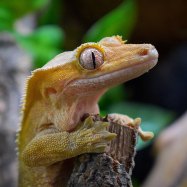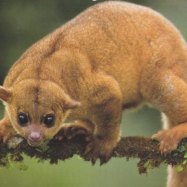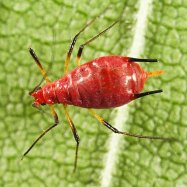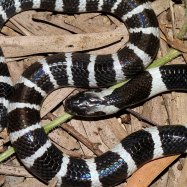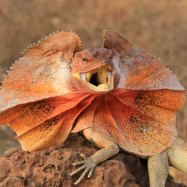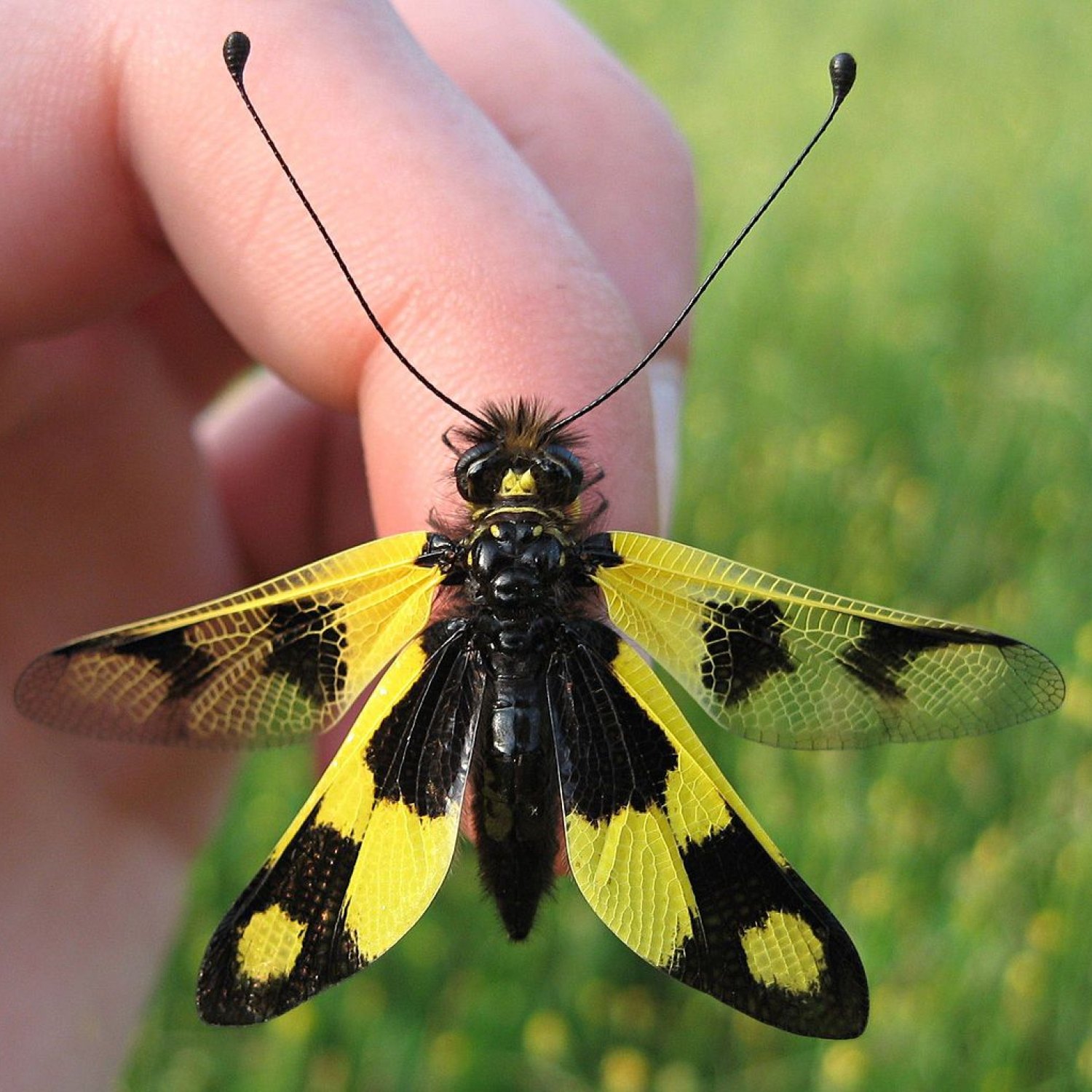
Owlfly
2-5 cm
Did you know that the owlfly, a fascinating insect belonging to the family Ascalaphidae, can be found in various habitats all around the world? With a body length of 2-5 cm, these long and slender creatures are known for their unique appearance and predatory behavior. Keep an eye out for these mini predators on your next nature hike!
Animal Details Summary:
Common Name: Owlfly
Kingdom: Animalia
Habitat: Forests, grasslands, meadows
The Amazing Owlfly: Nature's Perfect Predator
The world is full of incredible creatures, each with their unique characteristics and features. Some are known for their beauty, while others are known for their strength. But there is one insect that often goes unnoticed, despite its remarkable abilities - the owlfly.Scientifically known as Ascalaphidae, the owlfly is a member of the insect order Neuroptera, commonly found in forests, grasslands, and meadows all around the world Owlfly. Often mistaken for a butterfly or a dragonfly, this fascinating creature has its traits and behaviors that make it stand out from the rest.
From its kingdom, phylum, and class to its habitat, feeding method, and geographical distribution, let's delve deeper into the world of owlfly and uncover the secrets of this underappreciated insect.
The Taxonomy of Owlfly
The scientific name of owlfly is Ascalaphidae, which is derived from the Greek words "askalaphos" (a mythological figure) and "phaidros" (to shine). This name aptly describes the unique shiny appearance of the insect's wings.Owlfly belongs to the kingdom Animalia, which means it is an animal. It is also part of the phylum Arthropoda, which includes insects, spiders, and crustaceans. Additionally, owlfly belongs to the class Insecta, which is the largest class in the animal kingdom, containing over a million known species.
Habitat and Distribution
Owlfly can be found in various habitats around the world, including forests, grasslands, and meadows. They are mostly seen in temperate and tropical regions, but some species can even survive in arid and subarctic environments Ostracod.One unique thing about owlfly is that they are not natives of any particular country, making them a truly global insect. They have been spotted on every continent, except Antarctica, showcasing their adaptability and resilience.
Appearance
Owlfly is a relatively small insect, usually measuring between 2 to 5 cm in length. They have long and slender bodies, with large, intricate wings that resemble those of a butterfly. Their wingspan can range from 5 to 10 cm, making them efficient flyers.The coloration of owlfly varies, but most species are usually brown, black, or gray, helping them blend into their natural habitat. This camouflage plays a vital role in their survival, as they can easily hide from predators.
Their overall body structure is also unique, with large eyes, long antennae, and a prominent proboscis (tongue) used for feeding.
Feeding Behavior
One of the most fascinating characteristics of the owlfly is its feeding method. Unlike most insects, owlfly is carnivorous, meaning it feeds on other animals. They are skilled predators that can hunt and consume a variety of prey, including moths, flies, small insects, and even spiders.Owlfly is equipped with sharp mandibles, which they use to catch and tear apart their prey. They are also known to use their proboscis to inject saliva into their prey, paralyzing them and making it easier to consume.
This feeding behavior makes owlfly a valuable member of the ecosystem, as they help control the population of other insects in their habitat.
Behavior and Lifestyle
The life of an owlfly is mostly spent in solitude, as they are solitary creatures that do not interact much with their own kind. They are also nocturnal, preferring to hunt and feed at night. The cover of darkness gives them an advantage in catching prey, as their large eyes are well-adapted to low light conditions.During the day, owlfly rests, usually perched on a leaf or a tree branch, camouflaging themselves to avoid being seen by potential predators.
When it comes to reproduction, owlfly follows a unique mating ritual. The male owlfly produces a pheromone that attracts the female, who then lays her eggs on the surface of the ground or on plants. The eggs eventually hatch into larvae, which then undergo a series of molting stages before developing into adulthood.
Threats and Conservation Status
Despite their impressive abilities and diverse population, owlfly is not without its threats and challenges. Habitat loss and pollution are some of the significant factors that affect their population. The increase in urbanization and agricultural activities has led to the destruction of their natural habitats, making it difficult for them to survive.Another threat to owlfly is the use of insecticides. As they are carnivorous insects, they can ingest toxins when consuming prey that has been exposed to these chemicals. This can lead to severe health issues and even death.
However, there is still hope for the conservation of owlfly. Due to their widespread distribution, they are not listed as endangered or threatened. But more efforts need to be put in place to protect their natural habitats and educate the public about the importance of this often overlooked insect.
Applications in the Field of Technology
One might wonder what role an insect like owlfly plays in the world of technology. But interestingly, owlfly has been an inspiration for the development of new technologies.The intricate wing structure of owlfly has been studied by researchers in the field of biomimicry to develop new, more efficient, and eco-friendly flying machines. By imitating the wing structure of owlfly, scientists have been able to create drones and robots that can fly longer distances and use less energy.
Owlfly has also served as a model for developing surveillance devices due to its keen eyesight and ability to fly silently. These devices can be used for security and monitoring purposes and have been praised as a breakthrough in the field of technology.
Conclusion
In conclusion, owlfly may seem like an insignificant insect in the grand scheme of things, but upon closer inspection, it is a remarkable and essential creature. Its unique characteristics, behaviors, and habitat make it an important member of the ecosystem with a valuable role to play.Despite the threats they face, owlfly continues to thrive and adapt, proving that nature truly is remarkable. So, the next time you come across an owlfly, take a moment to appreciate its beauty, and remember, even the smallest creatures have a significant impact on our planet.

Owlfly
Animal Details Owlfly - Scientific Name: Ascalaphidae
- Category: Animals O
- Scientific Name: Ascalaphidae
- Common Name: Owlfly
- Kingdom: Animalia
- Phylum: Arthropoda
- Class: Insecta
- Order: Neuroptera
- Family: Ascalaphidae
- Habitat: Forests, grasslands, meadows
- Feeding Method: Carnivorous
- Geographical Distribution: Worldwide
- Country of Origin: Unknown
- Location: Various habitats
- Animal Coloration: Brown, black, gray
- Body Shape: Long and slender
- Length: 2-5 cm
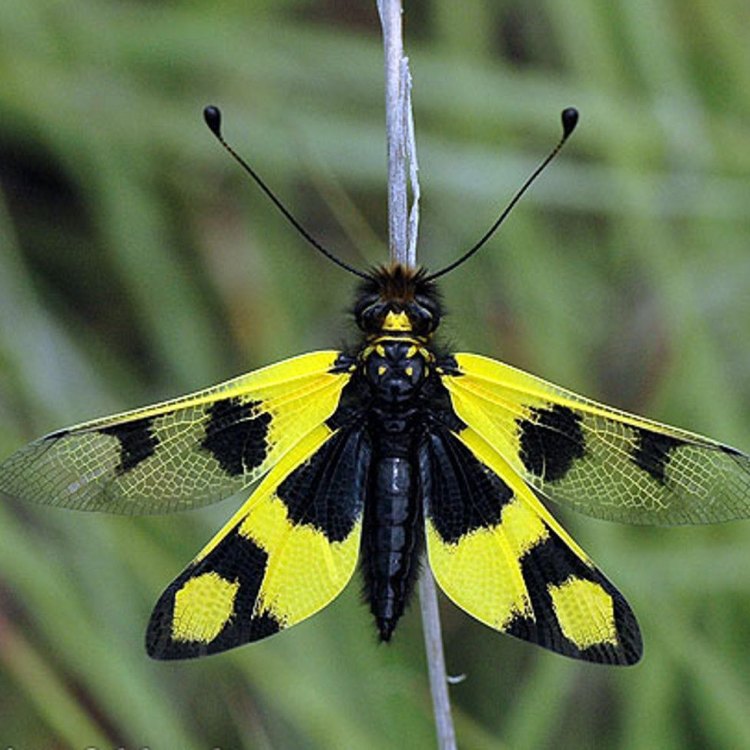
Owlfly
- Adult Size: Small
- Average Lifespan: 1-2 months
- Reproduction: Sexual
- Reproductive Behavior: Males perform courtship dances
- Sound or Call: No specific sound or call
- Migration Pattern: Non-migratory
- Social Groups: Solitary
- Behavior: Nocturnal
- Threats: Habitat loss, pesticide use
- Conservation Status: Not evaluated
- Impact on Ecosystem: Predator of small insects
- Human Use: None
- Distinctive Features: Long, thin wings, large eyes
- Interesting Facts: Owlfly larvae are fierce predators
- Predator: Birds, reptiles, amphibians
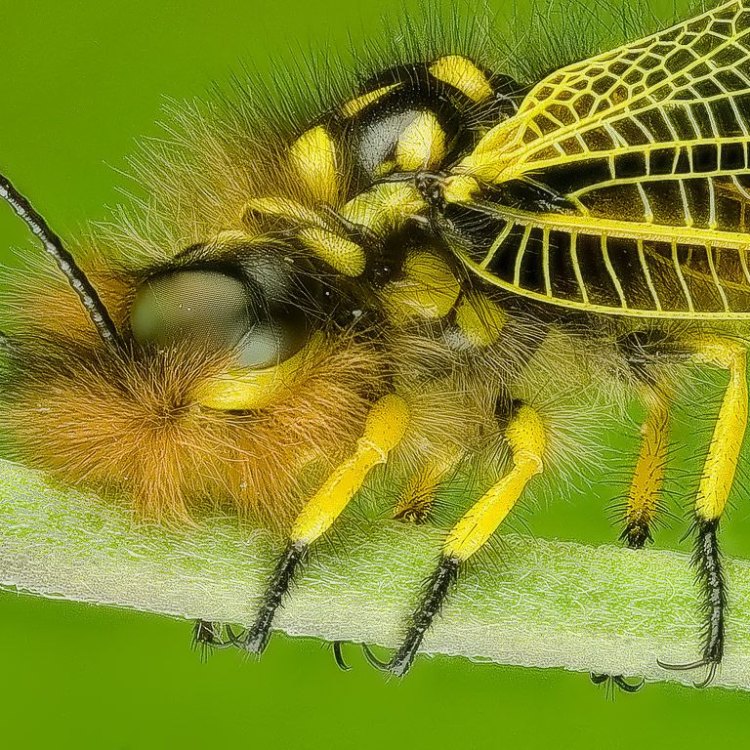
Ascalaphidae
The Majestic Owlfly: A Small Creature with a Big Presence
In the world of insects, there are many species that capture our interest and fascination. One such species is the Owlfly, a small insect with a big presence. These creatures may not have the mainstream popularity of butterflies or dragonflies, but they have a charm and uniqueness that sets them apart. From their reproductive behavior to their distinctive features, Owlflies are a fascinating creature that deserves more attention PeaceOfAnimals.Com. In this article, we will delve into the world of Owlfly and explore what makes them so special.The Basics: Adult Size and Lifespan
Owlfly, scientifically known as Ascalaphidae, is a family of insects that are typically small in adult size. They range in size from 0.5 to 4cm, making them easy to miss among their larger insect counterparts. Despite their small size, Owlfly adults have an impressive wingspan of 4 to 8cm, thanks to their long, thin wings. This unique feature is just one of many that make Owlfly such an interesting species.The average lifespan of an Owlfly is relatively short, ranging from 1 to 2 months. This short lifespan is due to their high metabolic rate, which is common in insects. However, even with such a short time on Earth, Owlflies make a big impact Ocelot.
Reproductive Behavior: Sexual and Courtship Dances
Owlfly reproduction is a fascinating process, as it is a combination of both sexual and courtship behavior. The males of the species are known to perform intricate, almost dance-like courtship displays to attract females. These dances involve complex movements of their wings and bodies, designed to catch the eye of potential mates.Once the female is courted successfully, the mating process begins. The female will lay her eggs on the leaves of plants, where they will hatch and develop into larvae. Interestingly, the female can lay up to 1000 eggs in a single season, ensuring a new generation of Owlfly to continue the species.
No Sound, No Problem: Owlfly's Lack of Sound or Call
While many insects are known for their distinct sounds or calls, Owlfly is not one of them. These creatures do not possess any specific sound or call and are relatively quiet. This characteristic makes them unique among insects, which often use sound for communication and mating purposes.Staying Put: Non-migratory Behavior
Migration is a common behavior among many species, especially birds and butterflies. However, Owlfly is not known for its migratory patterns. These creatures are non-migratory, meaning they stay in one area throughout their lifespan. This behavior is beneficial for the species as it allows them to establish territories and conserve energy.Solitary Creatures of the Night
Owlfly's social behavior is a solitary one. They prefer to live and hunt alone, with no need for a social group. Their nocturnal nature also contributes to their solitary behavior, as they are most active during the night. This behavior is a survival mechanism, as it allows them to avoid predators, conserve energy, and hunt for food more efficiently.Habitat Loss and Pesticide Use: Threats to Owlfly
Just like many other species, Owlfly also faces threats in its natural habitat. The primary threat to Owlfly is habitat loss, caused by deforestation and urbanization. These insects thrive in wooded areas and open fields, making them vulnerable to human development.Pesticide use is another significant threat to Owlfly populations. These chemicals not only kill their prey but also pose a direct danger to Owlfly's health and well-being. As a result, their numbers are declining in many regions, highlighting the importance of preserving their natural habitat.
No Official Status: Underrated Conservation Status
Due to their small size and lesser-known species, Owlfly has not been formally evaluated for conservation status. This lack of evaluation highlights the need for more research and attention to these creatures' conservation efforts. Preserving their natural habitats and reducing pesticide use is crucial to their survival and should be a priority for future conservation efforts.A Fierce Predator: Impact on the Ecosystem
Despite their small size, Owlfly plays a crucial role in the ecosystem as a predator of small insects. Their fierce larvae are known to hunt and consume other insects, helping to maintain a healthy balance in the environment. By keeping the population of other insects in check, Owlfly plays an important role in the food chain.Humans and Owlfly: No Human Use
Unlike other insects that are utilized by humans, Owlfly currently has no known human use. Their small size and short lifespan do not make them viable for domestication or commercial use. However, their presence in the ecosystem is beneficial, and efforts should be made to preserve their populations.Distinctive Features: Long, Thin Wings and Large Eyes
Owlfly may be small, but they have some distinctive features that make them stand out in the insect world. Their long, thin wings are perhaps their most noticeable feature, giving them an owl-like appearance and earning them their name. These wings also aid in their excellent flying and hunting abilities.Their large, prominent eyes are another distinguishing feature of Owlfly. These eyes provide them with excellent vision, allowing them to spot prey from a distance. They also have a reflective layer in their eyes, similar to cats, which helps improve their night vision.
A Child of the Night: Nocturnal Behavior
One of the most interesting facts about Owlfly is their nocturnal behavior. These creatures, like their namesake, are most active at night, hunting and living in the cover of darkness. This behavior may seem mysterious to us, but for Owlfly, it is a survival mechanism that has served them well for centuries.Fierce Hunter with Fierce Predator
While Owlfly may not be a household name among insects, they are certainly fierce predators. Their larvae are known to be voracious hunters, preying on other insects such as ants and caterpillars. This behavior is essential not only for their survival but also for maintaining the balance of the ecosystem.However, Owlfly is not without its predators. Birds, reptiles, and amphibians are known to hunt and consume Owlfly, making these insects a critical part of the food chain.
In Conclusion
Owlfly may be small, but they have a big impact on the ecosystem. From their unique reproductive behavior to their distinctive features, these insects have captured our fascination and curiosity. However, with their populations declining due to various threats, it is essential to recognize and preserve the importance of Owlfly in the environment. As we continue to learn more about these magnificent creatures, let us also strive to protect and conserve them for generations to come.
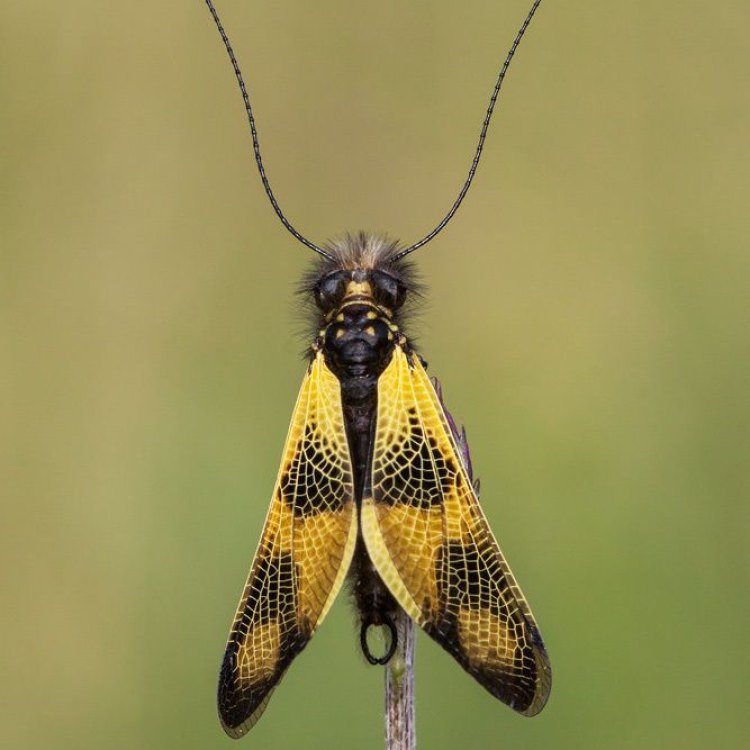
The Amazing Owlfly: Nature's Perfect Predator
Disclaimer: The content provided is for informational purposes only. We cannot guarantee the accuracy of the information on this page 100%. All information provided here may change without prior notice.

